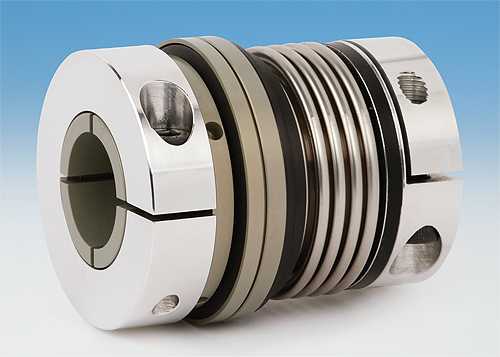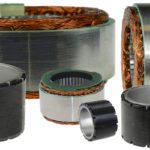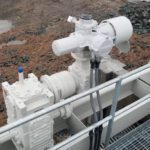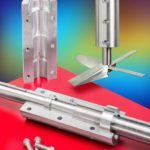Bellows couplings are one form of flexible coupling with twin coupling ends called hubs capping a precision-engineered corrugated tube that serves as the coupling body.
Bellows couplings are known for their exceptional torsional rigidity to accurately transmit velocity, angular position, and torque. Their slight flexibility (at the corrugated bellows) serves to address limited amounts of axial, angular, and parallel misalignment between the shafts or other components being joined.
Bellows couplings are typically made from a stainless steel tube that is hydroformed (or in some cases welded) to create deep corrugations. Such hydroformed bellows begin as a sheet of stainless steel or other metal. This sheet is draw into a a tube which it then pressurized from within against a ribbed die to form a corrugated shape. Then the end hubs are welded or bonded in some manner to this coupling bellows.
Bellows couplings tend to have the highest torsional stiffness of any servo motor coupling, and so are used in applications requiring high precision positioning.

Selecting the right bellows coupling for an application starts with knowing the torque involved. For instance, it’s helpful to know the peak torque capacity of the servo motor. This value, multiplied by the gear reduction ratio and a safety factor of 1.5, gives the minimal torque calculation.
In most cases, couplings are rated according to the maximum peak torque to be transmitted. The peak torque should not exceed the coupling’s rated torque. Rated torque is a term that refers to the torque that is continuously transmittable within the specified acceptable speed and misalignment ranges. Learn what a bellows coupling torque failure look likes in this article here.
Other applications where bellows couplings excel
Unlike some couplings that include polymer inserts or other elements (usually to impart some misalignment or vibration compensation) all-metal bellows couplings excel in very hot environments. They also find use on precision equipment having components that may exhibit dimensional changes (and inducing axial misalignment) when subject to fluctuating temperatures.
The partially hollow construction of bellows couplings makes them lighter and indispensable on axes needing a train of power-transmission components with the lowest possible moments of inertia. Such applications include servomotor-driven designs that need to be nimble and quickly accelerate and decelerate. Here, the high torsional stiffness exhibited by bellows couplings is also useful — especially where an axis must make quick indexing or reversing moves.







Leave a Reply
You must be logged in to post a comment.